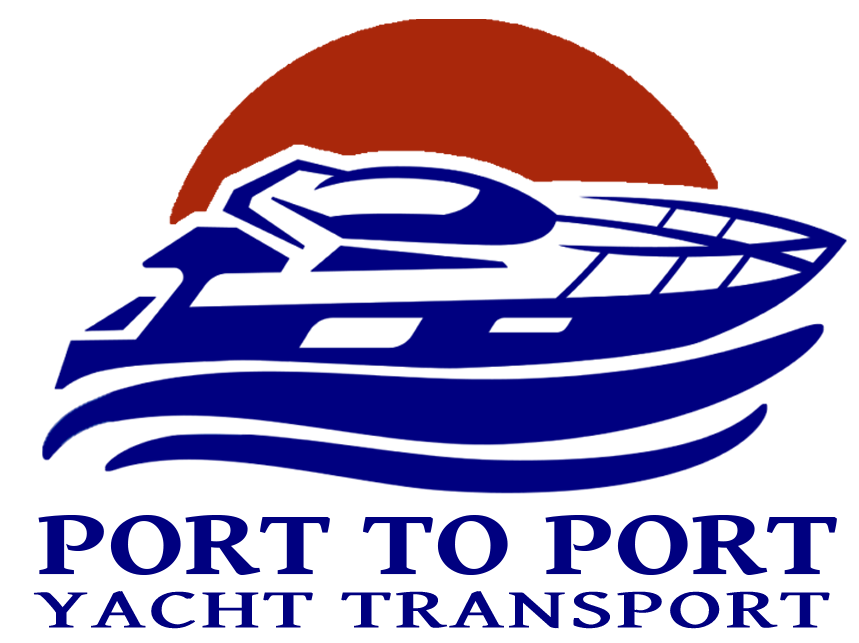Table of Contents
TogglePrepare Your Boat or Yacht for Transport with Don Saunders

Our very own visionary founder and dedicated owner of Port to Port Yacht Transport, has a core philosophy that resonates with every yacht owner. He firmly believes in treating your cherished boat as if it were his own, emphasizing a personal connection between yacht owners. In his words, ‘We understand the love and care that goes into owning a yacht, and that’s exactly how we approach every transport—Yacht owner to Yacht owner.'”
Prepare your boat or yacht for transport is essential,
“And when it comes to securing your valuable investment during transport, Port to Port stands as a beacon of reliability. Don Saunders proudly states that ‘Port to Port carries a substantial $1 million in cargo insurance.’ This commitment to safeguarding your yacht reinforces their dedication to ensuring your peace of mind throughout the journey.” We know how to prepare your boat or yacht for transport- we prepare every day with manufacturers, dealers, brokers and individuals like you.
Here’s how to prepare your boat or yacht for transport:
Step 1: Accurate Measurement of Your Boat
Before embarking on boat transportation, obtaining precise measurements of your vessel is a crucial initial step. Accurate measurements are essential for providing necessary information when requesting a transport quote and ensuring that the chosen hauler can provide suitable equipment for your boat’s size. Key measurements to take into account include:
-
- Overall length, which should include bow pulpits, platforms, outboard motors, and motor brackets. Measure from the tip of the tongue to the end of the engine.
-
- Overall height, considering that some overpasses have height restrictions (usually 13’6″). Additionally, oversized transport regulations necessitate adherence to specific size limits. Height measurement includes the distance from the bottom of the keel to the highest non-removable section, with the total standing height calculated from the draft plus clearance.
-
- Overall width, which should encompass the widest point of your boat, including attachments.
For boats with bridges, it may be necessary to have the bridge removed for transport. Measure the boat without including the bridge and provide bridge dimensions to ensure appropriate transportation.
Prepare your boat or yacht for transport by:
Step 2: Secure All Belongings Before Transport
Before the arrival of the boat transport truck, it’s essential to secure all belongings and ensure they are prepared for safe transport:
-
- Electronics should be secured, either stored in the cabin with all doors, windows, and access points locked, or shipped separately.
-
- Anchors, propellers, and other movable objects that exceed the boat’s dimensions must be adequately secured to prevent shifting during transit.
-
- Canvas, cushions, and screens should be stored below deck to prevent damage and ensure they remain secure during transport.
-
- If you have a dinghy, it cannot be transported on davits; it should either be stored inside the cabin or properly padded and lashed inside the cockpit.
-
- Remove exterior electronics, horns, lights, windshields, and other removable items, securing them with cargo blankets and storing them below deck. It’s important to note that carriers are not responsible for lost items during transit.
-
- Lock everything securely, including interior items, locker doors, and lash down any items left onboard. The driver won’t have access to the cabin key, so loose items during transit cannot be re-secured.
-
- Prepare your boat for transport by Sealing hatches with tape to prevent wind-driven water from entering the boat and secure latches to prevent them from coming undone during transport.
-
- Check drain plugs to ensure there is no water in the bilge during transportation. Additionally, ensure the fuel tank is no more than a quarter full. In cold weather, drain water from pumps, air conditioners, and water systems to prevent damage.
-
Inspect and Repair: Prepare your boat for transport by conducting a thorough inspection of your boat or its trailer to identify any existing damage or vulnerable areas. Keep in mind that the trailer structure and tires must go the distance you are requesting. Address any necessary repairs or maintenance before transport to prevent further issues during transit.
-
Inventory: Prepare your boat for transport by Creating a detailed inventory of your boat’s contents, especially if valuable items are left on board. This will help you keep track of your belongings and ensure nothing goes missing during transport.
-
Fuel and Fluids: As previously mentioned, drain fuel and water tanks and remove drain plugs from the hull. Ensure that all other fluids, such as hydraulic fluids or coolants, are at appropriate levels and won’t leak during transport.
Prepare your boat or yacht for transport and for weight station and the check for Zebra Mussel inspections.
Step 3: Zebra Mussel Inspection Before Departure
If you are moving your boat from a location infested with Zebra mussels to another state, it’s vital to inspect your vessel thoroughly to avoid transporting these invasive species. Check intake strainers, through-hull fittings, scuppers, outdrives, and other potential attachment areas for any signs of Zebra mussels. If Zebra mussels are detected at a weigh station, your boat may be seized by the Department of Transportation (DOT), and hot water treatment will be required to remove the attached mussels.
Prepare your boat or yacht for transport take times and attention to detail is a crucial task that involves careful planning and attention to detail. The responsibility for preparing the vessel typically falls on the boat’s owner, although marina or boatyard personnel may be involved if the boat is prepared on their premises. Alternatively, you can choose to transport your boat “as is,” but it’s important to note that the carrier will not be liable for any damage resulting from improper preparation.
Ideally, the Port to Port Yacht transport company has extensive experience working with regulatory authorities, boatyards, ports, and marinas, which ensures a smoother process. It’s worth mentioning that boat haulers have strict safety guidelines, and Port to Port Yacht Transport will discuss the conditions, if unsafe, or issues around transporting may be imminent. Port to Port Yacht Transport underscores the importance of proper preparation to avoid delays and complications.
At Port-Port.com every aspect of your transport is important to us as is how to prepare your boat or yacht for transport. If you have questions, Call Captain Don Saunders if you have any questions regarding your transport.
